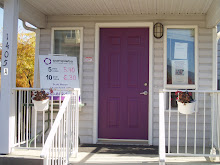Many Canadian families are working hard to save money and reduce debt. By saving modest amounts, however, you can reap big rewards over time. Here are easy ways you can save $100 or more this year.
1. Plug into Bargain Electricity
Are your electricity bills excessive? Maybe you're using too much power at peak hours. For instance, try running your dishwasher at night, rather than during the day. By taking advantage of off-peak rates, most consumers can save about $100 a year. Replace pre-1992 appliances when they break down with the news ones with the Energy Star label.
2. Challenge Your Property Tax
Go to your local assessor's office and find out what property taxes your neighbours are paying. If your house is similar but your taxes are higher, you may want to challenge your bill. Also, read the description of your home. Errors in square footage or the number of bathrooms could mean an overcharge. The assessor's office or local board of tax review can tell you how to file an appeal.
3. Pay Off Your Plastic
If you carry a credit-card balance from month to month, pay it back pronto. A $1000 balance at 18 percent blows nearly $200 a year in interest. If you can't pay it off in full, transfer your debt to a lower-rate card.
4. Say No to Car Extras
Your car dealer may sell you rustproof treatment and fabric protection at $100 a pop, and paint protection for as much as $250. Usually these extras are the dealer's way to squeeze more money out of you.
5. Skip the Service Contract
Extended warranties on electronics are rarely a good deal. Experts say most product breakdowns occur in the first year and are covered by the manufacturer's warranty.
6. Buy in Bulk
Items you may use a lot, such as paper towels and diapers, are often far cheaper when you buy in quantity. For example, new parents buy an average of 2400 disposable diapers in their baby's first year alone. Diapers that cost 20 cents a piece sold at grocery shops might go for 15 cents when bought in bulk at a discount store or warehouse. Just a nickel a diaper could add up to an annual savings of $120.
7. Rethink Your Vacations
The "staycation" (relaxing at home) is becoming a popular way to save a bundle on a vacation. But if you still want to travel, consider using a "homestay" program.
8. Use Online Banking
Online Banking can save you time and money. If you sometimes forget to pay bills, set up automatic payments in order to avoid potential late fees. It also allows you to monitor your cash flow more easily.
http://www.okanaganmortgages.com/
1. Plug into Bargain Electricity
Are your electricity bills excessive? Maybe you're using too much power at peak hours. For instance, try running your dishwasher at night, rather than during the day. By taking advantage of off-peak rates, most consumers can save about $100 a year. Replace pre-1992 appliances when they break down with the news ones with the Energy Star label.
2. Challenge Your Property Tax
Go to your local assessor's office and find out what property taxes your neighbours are paying. If your house is similar but your taxes are higher, you may want to challenge your bill. Also, read the description of your home. Errors in square footage or the number of bathrooms could mean an overcharge. The assessor's office or local board of tax review can tell you how to file an appeal.
3. Pay Off Your Plastic
If you carry a credit-card balance from month to month, pay it back pronto. A $1000 balance at 18 percent blows nearly $200 a year in interest. If you can't pay it off in full, transfer your debt to a lower-rate card.
4. Say No to Car Extras
Your car dealer may sell you rustproof treatment and fabric protection at $100 a pop, and paint protection for as much as $250. Usually these extras are the dealer's way to squeeze more money out of you.
5. Skip the Service Contract
Extended warranties on electronics are rarely a good deal. Experts say most product breakdowns occur in the first year and are covered by the manufacturer's warranty.
6. Buy in Bulk
Items you may use a lot, such as paper towels and diapers, are often far cheaper when you buy in quantity. For example, new parents buy an average of 2400 disposable diapers in their baby's first year alone. Diapers that cost 20 cents a piece sold at grocery shops might go for 15 cents when bought in bulk at a discount store or warehouse. Just a nickel a diaper could add up to an annual savings of $120.
7. Rethink Your Vacations
The "staycation" (relaxing at home) is becoming a popular way to save a bundle on a vacation. But if you still want to travel, consider using a "homestay" program.
8. Use Online Banking
Online Banking can save you time and money. If you sometimes forget to pay bills, set up automatic payments in order to avoid potential late fees. It also allows you to monitor your cash flow more easily.
http://www.okanaganmortgages.com/





